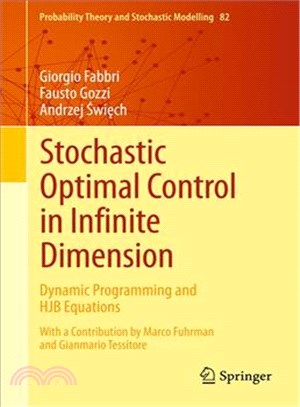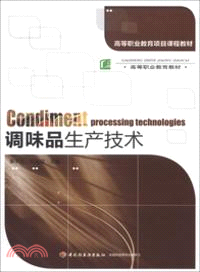Mathematical Analysis Of Evolution, Information And Complexity
商品資訊
ISBN13:9783527408306
出版社:John Wiley & Sons Inc
作者:Arendt
出版日:2009/03/18
裝訂/頁數:精裝/502頁
定價
:NT$ 7790 元優惠價
:90 折 7011 元
若需訂購本書,請電洽客服 02-25006600[分機130、131]。
商品簡介
作者簡介
目次
商品簡介
Mathematical Analysis of Evolution, Information, and Complexity deals with the analysis of evolution, information and complexity. The time evolution of systems or processes is a central question in science, this text covers a broad range of problems including diffusion processes, neuronal networks, quantum theory and cosmology. Bringing together a wide collection of research in mathematics, information theory, physics and other scientific and technical areas, this new title offers elementary and thus easily accessible introductions to the various fields of research addressed in the book.
作者簡介
Wolfgang Arendt is head of the Institute of Applied Analysis at the University of Ulm, Germany. Having obtained his degrees from the University of Nice, France, and Tübingen, Germany, he worked for eight years as a professor at the University of Besançon, France, before accepting a chair at the University of Ulm in Germany. He held visiting positions at the University of California at Berkeley, and the universities of Nancy, Oxford, Zürich, Canberra, Sydney and Lecce. Professor Arendt's fields of research are partial differential equations and functional analysis with special emphasis on evolution equations.
Wolfgang P. Schleich is head of the Institute of Quantum Physics at the University of Ulm, Germany, and Distinguished Adjunct Professor at the University of North Texas in Denton, USA. He has published more than 250 papers on problems of quantum optics, foundations of quantum mechanics and general relativity and is the author of the highly acclaimed textbook Quantum Optics in Phase Space, published with Wiley-VCH. For his work he has received numerous awards and honours.
Wolfgang P. Schleich is head of the Institute of Quantum Physics at the University of Ulm, Germany, and Distinguished Adjunct Professor at the University of North Texas in Denton, USA. He has published more than 250 papers on problems of quantum optics, foundations of quantum mechanics and general relativity and is the author of the highly acclaimed textbook Quantum Optics in Phase Space, published with Wiley-VCH. For his work he has received numerous awards and honours.
目次
Preface.
List of Contributors.
Prologue (Wolfgang Arendt, Delio Mugnolo and Wolfgang Schleich).
1 Weyl’s Law (Wolfgang Arendt, Robin Nittka, Wolfgang Peter, Frank Steiner).
1.1 Introduction.
1.2 A Brief History of Weyl’s Law.
1.3 Weyl’s Law with Remainder Term I.
1.4 Weyl’s Law with Remainder Term II.
1.5 Generalizations of Weyl’s Law.
1.6 A Proof of Weyl’s Formula.
1.7 Can One Hear the Shape of a Drum?
1.8 Does Diffusion Determine the Domain?
References.
2 Solutions of Systems of Linear Ordinary Differential Equations (Werner Balser, Claudia Röscheisen, Frank Steiner, Eric Sträng).
2.1 Introduction.
2.2 The Exponential Ansatz of Magnus.
2.3 The Feynman-Dyson Series, and More General Perturbation Techniques.
2.4 Power Series Methods.
2.5 Multi-Summability of Formal Power-Series.
2.6 Periodic ODE.
References.
3 A Scalar-Tensor Theory of Gravity with a Higgs Potential (Nils Manuel Bezares-Roder, Frank Steiner).
3.1 Introduction.
3.2 Scalar-Tensor Theory with Higgs Potential.
References.
4 Relating Simulation and Modeling of Neural Networks (Stefano Cardanobile, Heiner Markert, Delio Mugnolo, Günther Palm, Friedhelm Schwenker).
4.1 Introduction.
4.2 Voltage-Based Models.
4.3 Changing Paradigm – From Biological Networks of Neurons to Artificial Neural Networks.
4.4 Numerical Simulation of Neural Networks.
4.5 Population-Based Simulation of Large Spiking Networks.
4.6 Synaptic Plasticity and Developing Neural Networks.
References.
5 Boolean Networks for Modeling Gene Regulation (Christian Wawra, Michael Kühl, Hans A Kestler).
5.1 Introduction.
5.2 Biological Background.
5.3 Aims of Modeling.
5.4 Modeling Techniques.
5.5 Modeling GRNs with Boelean Networks.
5.6 Dynamic Behavior of Large Random Networks.
5.7 Inference of Gene Regulatory Networks from Real Data.
5.8 Conclusion.
References.
6 Symmetries in Quantum Graphs (Jens Bolte, Stefano Cardanobile, Delio Mugnolo, Robin Nittka).
6.1 Symmetries.
6.2 Quantum Graphs.
6.3 Energy Methods for Schrödinger Equations.
6.4 Symmetries in Quantum Graphs.
6.5 Schrödinger Equation with Potentials.
6.6 Concluding Remarks and Open Problems.
References.
7 Distributed Architecture for Speech-Controlled Systems Based on Associative Memories (Zöhre Kara Kayikci, Dmitry Zaykovskiy, Heiner Markert, Wolfgang Minker, Günther Palm).
7.1 Introduction.
7.2 System Architecture.
7.3 Feature Extraction on Mobile Devices.
7.4 Speech Recognition Systems Based on Associative Memory.
7.5 Words to Semantics Conversion using Associative Memory.
7.6 Sample System/Experimental Results.
7.7 Conclusion.
References.
8 Machine Learning for Categorization of Speech Utterances (Amparo Albalate, David Suendermann, Roberto Pieraccini, Wolfgang Minker).
8.1 Introduction.
8.2 An Overview of Pattern Recognition.
8.3 Utterance Classification as a Text-Classification Problem.
8.4 Utterance Corpus Description.
8.5 Utterance Preprocessing.
8.6 Feature Extraction Based on Term Clustering.
8.7 Supervised Methods for Utterance Categorization.
8.8 Evaluation Methods and Results.
8.9 Summary and Conclusion.
References.
9 Semi-Supervised Clustering in Functional Genomics (Johann M. Kraus, Günther Palm, Friedhelm Schwenker, Hans A Kestler).
9.1 Introduction.
9.2 Biological Background.
9.3 Cluster Analysis.
9.4 Semi-Supervised Clustering.
9.5 Summary.
References.
10 Image Processing and Feature Extraction from a Perspective of Computer Vision and Physical Cosmology (Holger Stefan Janzer, Florian Raudies, Heiko Neumann, Frank Steiner).
10.1 Introduction.
10.2 Background from Computer Vision.
10.3 Background from Physical Cosmology.
10.4 Image Formation and Characterization.
10.5 Methods of Image Processing.
10.6 Invariant Features of Images.
10.7 Concluding Remarks.
References.
11 Boosting Ensembles of Weak Classifiers in High Dimensional Input Spaces (Ludwig Lauser, Friedhelm Schwenker, Hans A Kestler).
11.1 Introduction.
11.2 Hypothesis Boosting Problem.
11.3 Learn.
11.4 Boosting by Majority.
11.5 AdaBoost.
11.6 BrownBoost.
11.7 AdaBoost for Feature Selection.
11.8 Conclusion.
References.
12 The Sampling Theorem in Theory and Practice (Wolfgang Arendt, Michal Chovanec, Jürgen Lindner, Robin Nittka).
12.1 Introduction and History.
12.2 The Sampling Theorem in Applications.
12.3 Mathematical Formulation of the Sampling Theorem.
References.
13 Coding and Decoding of Algebraic-Geometric Codes (Martin Bossert, Werner Lütkebohmert, Jörg Marhenke).
13.1 Introduction.
13.2 Introduction to Linear Codes.
13.3 Introduction to Forward Error Correction.
13.4 Algebraic-Geometric Codes.
13.5 Computation of Riemann-Roch Spaces.
13.6 Decoding up to Half the Minimum Distance.
13.7 Interpolation-Based Decoding.
13.8 Power Decoding of Low Rate Reed-Solomon Codes.
13.9 Interpolation-Based Soft-Decision Decoding.
13.10 Soft-Decision Decoding with the Dorsch Algorithm.
References.
14 Investigation of Input-Output Gain in Dynamical Systems for Neural Information Processing (Stefano Cardanobile, Michael Cohen, Silvia Corchs, Delio Mugnolo, Heiko Neumann).
14.1 Overview.
14.2 Introduction.
14.3 The Basic Unit: Analytical Study of the Dipole.
14.4 The Basic Unit: Numerical Analysis of the Dipole.
14.5 Model of a Recurrent Network.
14.6 Discussion and Conclusions.
References.
15. Factorization (Rüdiger Mack, Wolfgang P. Schleich, Daniel Haase, Helmut Maier).
15.1 Introduction.
15.2 How to Factor Numbers.
15.3 How to Find the Period of a Function: The Magic Role of Entanglement.
15.4 Analogy with Atom Optics.
15.5 Exponential Growth of Hilbert Space as a Resource of Exponential Speedup.
15.6 Conclusions.
References.
16 Isomorphism and Factorization – Classical and Quantum Algorithms (Sebastian Dörn, Daniel Haase, Jacobo Torán, Fabian Wagner).
16.1 Introduction.
16.2 Factorization of Integers: Classical Algorithms.
16.3 Graph Isomorphism: Classical Algorithms.
16.4 Quantum Algorithms for Integer Factorization.
16.5 Quantum Approach to Graph Isomorphism.
16.6 Reductions of Integer Factorization and Graph Isomorphism to Ring Isomorphism.
References.
17 QuickSort from an Information Theoretic View (Beatrice List, Markus Maucher, Uwe Schöning, Rainer Schuler).
17.1 Introduction.
17.2 An Upper Bound.
17.3 A Lower Bound.
17.4 The δ-Random Source.
17.5 Conclusion.
References.
Further Reading.
Index.
List of Contributors.
Prologue (Wolfgang Arendt, Delio Mugnolo and Wolfgang Schleich).
1 Weyl’s Law (Wolfgang Arendt, Robin Nittka, Wolfgang Peter, Frank Steiner).
1.1 Introduction.
1.2 A Brief History of Weyl’s Law.
1.3 Weyl’s Law with Remainder Term I.
1.4 Weyl’s Law with Remainder Term II.
1.5 Generalizations of Weyl’s Law.
1.6 A Proof of Weyl’s Formula.
1.7 Can One Hear the Shape of a Drum?
1.8 Does Diffusion Determine the Domain?
References.
2 Solutions of Systems of Linear Ordinary Differential Equations (Werner Balser, Claudia Röscheisen, Frank Steiner, Eric Sträng).
2.1 Introduction.
2.2 The Exponential Ansatz of Magnus.
2.3 The Feynman-Dyson Series, and More General Perturbation Techniques.
2.4 Power Series Methods.
2.5 Multi-Summability of Formal Power-Series.
2.6 Periodic ODE.
References.
3 A Scalar-Tensor Theory of Gravity with a Higgs Potential (Nils Manuel Bezares-Roder, Frank Steiner).
3.1 Introduction.
3.2 Scalar-Tensor Theory with Higgs Potential.
References.
4 Relating Simulation and Modeling of Neural Networks (Stefano Cardanobile, Heiner Markert, Delio Mugnolo, Günther Palm, Friedhelm Schwenker).
4.1 Introduction.
4.2 Voltage-Based Models.
4.3 Changing Paradigm – From Biological Networks of Neurons to Artificial Neural Networks.
4.4 Numerical Simulation of Neural Networks.
4.5 Population-Based Simulation of Large Spiking Networks.
4.6 Synaptic Plasticity and Developing Neural Networks.
References.
5 Boolean Networks for Modeling Gene Regulation (Christian Wawra, Michael Kühl, Hans A Kestler).
5.1 Introduction.
5.2 Biological Background.
5.3 Aims of Modeling.
5.4 Modeling Techniques.
5.5 Modeling GRNs with Boelean Networks.
5.6 Dynamic Behavior of Large Random Networks.
5.7 Inference of Gene Regulatory Networks from Real Data.
5.8 Conclusion.
References.
6 Symmetries in Quantum Graphs (Jens Bolte, Stefano Cardanobile, Delio Mugnolo, Robin Nittka).
6.1 Symmetries.
6.2 Quantum Graphs.
6.3 Energy Methods for Schrödinger Equations.
6.4 Symmetries in Quantum Graphs.
6.5 Schrödinger Equation with Potentials.
6.6 Concluding Remarks and Open Problems.
References.
7 Distributed Architecture for Speech-Controlled Systems Based on Associative Memories (Zöhre Kara Kayikci, Dmitry Zaykovskiy, Heiner Markert, Wolfgang Minker, Günther Palm).
7.1 Introduction.
7.2 System Architecture.
7.3 Feature Extraction on Mobile Devices.
7.4 Speech Recognition Systems Based on Associative Memory.
7.5 Words to Semantics Conversion using Associative Memory.
7.6 Sample System/Experimental Results.
7.7 Conclusion.
References.
8 Machine Learning for Categorization of Speech Utterances (Amparo Albalate, David Suendermann, Roberto Pieraccini, Wolfgang Minker).
8.1 Introduction.
8.2 An Overview of Pattern Recognition.
8.3 Utterance Classification as a Text-Classification Problem.
8.4 Utterance Corpus Description.
8.5 Utterance Preprocessing.
8.6 Feature Extraction Based on Term Clustering.
8.7 Supervised Methods for Utterance Categorization.
8.8 Evaluation Methods and Results.
8.9 Summary and Conclusion.
References.
9 Semi-Supervised Clustering in Functional Genomics (Johann M. Kraus, Günther Palm, Friedhelm Schwenker, Hans A Kestler).
9.1 Introduction.
9.2 Biological Background.
9.3 Cluster Analysis.
9.4 Semi-Supervised Clustering.
9.5 Summary.
References.
10 Image Processing and Feature Extraction from a Perspective of Computer Vision and Physical Cosmology (Holger Stefan Janzer, Florian Raudies, Heiko Neumann, Frank Steiner).
10.1 Introduction.
10.2 Background from Computer Vision.
10.3 Background from Physical Cosmology.
10.4 Image Formation and Characterization.
10.5 Methods of Image Processing.
10.6 Invariant Features of Images.
10.7 Concluding Remarks.
References.
11 Boosting Ensembles of Weak Classifiers in High Dimensional Input Spaces (Ludwig Lauser, Friedhelm Schwenker, Hans A Kestler).
11.1 Introduction.
11.2 Hypothesis Boosting Problem.
11.3 Learn.
11.4 Boosting by Majority.
11.5 AdaBoost.
11.6 BrownBoost.
11.7 AdaBoost for Feature Selection.
11.8 Conclusion.
References.
12 The Sampling Theorem in Theory and Practice (Wolfgang Arendt, Michal Chovanec, Jürgen Lindner, Robin Nittka).
12.1 Introduction and History.
12.2 The Sampling Theorem in Applications.
12.3 Mathematical Formulation of the Sampling Theorem.
References.
13 Coding and Decoding of Algebraic-Geometric Codes (Martin Bossert, Werner Lütkebohmert, Jörg Marhenke).
13.1 Introduction.
13.2 Introduction to Linear Codes.
13.3 Introduction to Forward Error Correction.
13.4 Algebraic-Geometric Codes.
13.5 Computation of Riemann-Roch Spaces.
13.6 Decoding up to Half the Minimum Distance.
13.7 Interpolation-Based Decoding.
13.8 Power Decoding of Low Rate Reed-Solomon Codes.
13.9 Interpolation-Based Soft-Decision Decoding.
13.10 Soft-Decision Decoding with the Dorsch Algorithm.
References.
14 Investigation of Input-Output Gain in Dynamical Systems for Neural Information Processing (Stefano Cardanobile, Michael Cohen, Silvia Corchs, Delio Mugnolo, Heiko Neumann).
14.1 Overview.
14.2 Introduction.
14.3 The Basic Unit: Analytical Study of the Dipole.
14.4 The Basic Unit: Numerical Analysis of the Dipole.
14.5 Model of a Recurrent Network.
14.6 Discussion and Conclusions.
References.
15. Factorization (Rüdiger Mack, Wolfgang P. Schleich, Daniel Haase, Helmut Maier).
15.1 Introduction.
15.2 How to Factor Numbers.
15.3 How to Find the Period of a Function: The Magic Role of Entanglement.
15.4 Analogy with Atom Optics.
15.5 Exponential Growth of Hilbert Space as a Resource of Exponential Speedup.
15.6 Conclusions.
References.
16 Isomorphism and Factorization – Classical and Quantum Algorithms (Sebastian Dörn, Daniel Haase, Jacobo Torán, Fabian Wagner).
16.1 Introduction.
16.2 Factorization of Integers: Classical Algorithms.
16.3 Graph Isomorphism: Classical Algorithms.
16.4 Quantum Algorithms for Integer Factorization.
16.5 Quantum Approach to Graph Isomorphism.
16.6 Reductions of Integer Factorization and Graph Isomorphism to Ring Isomorphism.
References.
17 QuickSort from an Information Theoretic View (Beatrice List, Markus Maucher, Uwe Schöning, Rainer Schuler).
17.1 Introduction.
17.2 An Upper Bound.
17.3 A Lower Bound.
17.4 The δ-Random Source.
17.5 Conclusion.
References.
Further Reading.
Index.
主題書展
更多
主題書展
更多書展今日66折
您曾經瀏覽過的商品
購物須知
外文書商品之書封,為出版社提供之樣本。實際出貨商品,以出版社所提供之現有版本為主。部份書籍,因出版社供應狀況特殊,匯率將依實際狀況做調整。
無庫存之商品,在您完成訂單程序之後,將以空運的方式為你下單調貨。為了縮短等待的時間,建議您將外文書與其他商品分開下單,以獲得最快的取貨速度,平均調貨時間為1~2個月。
為了保護您的權益,「三民網路書店」提供會員七日商品鑑賞期(收到商品為起始日)。
若要辦理退貨,請在商品鑑賞期內寄回,且商品必須是全新狀態與完整包裝(商品、附件、發票、隨貨贈品等)否則恕不接受退貨。
































